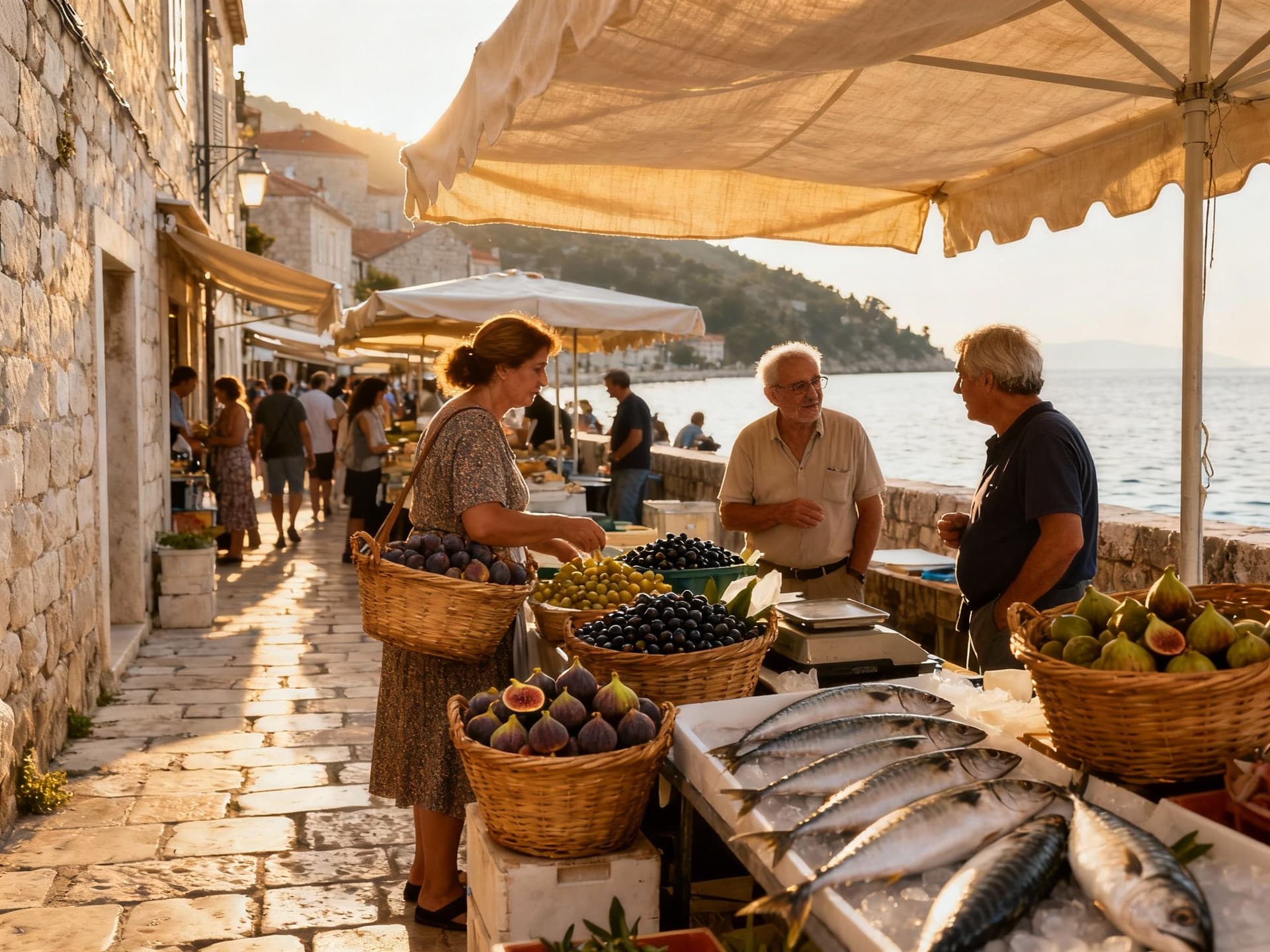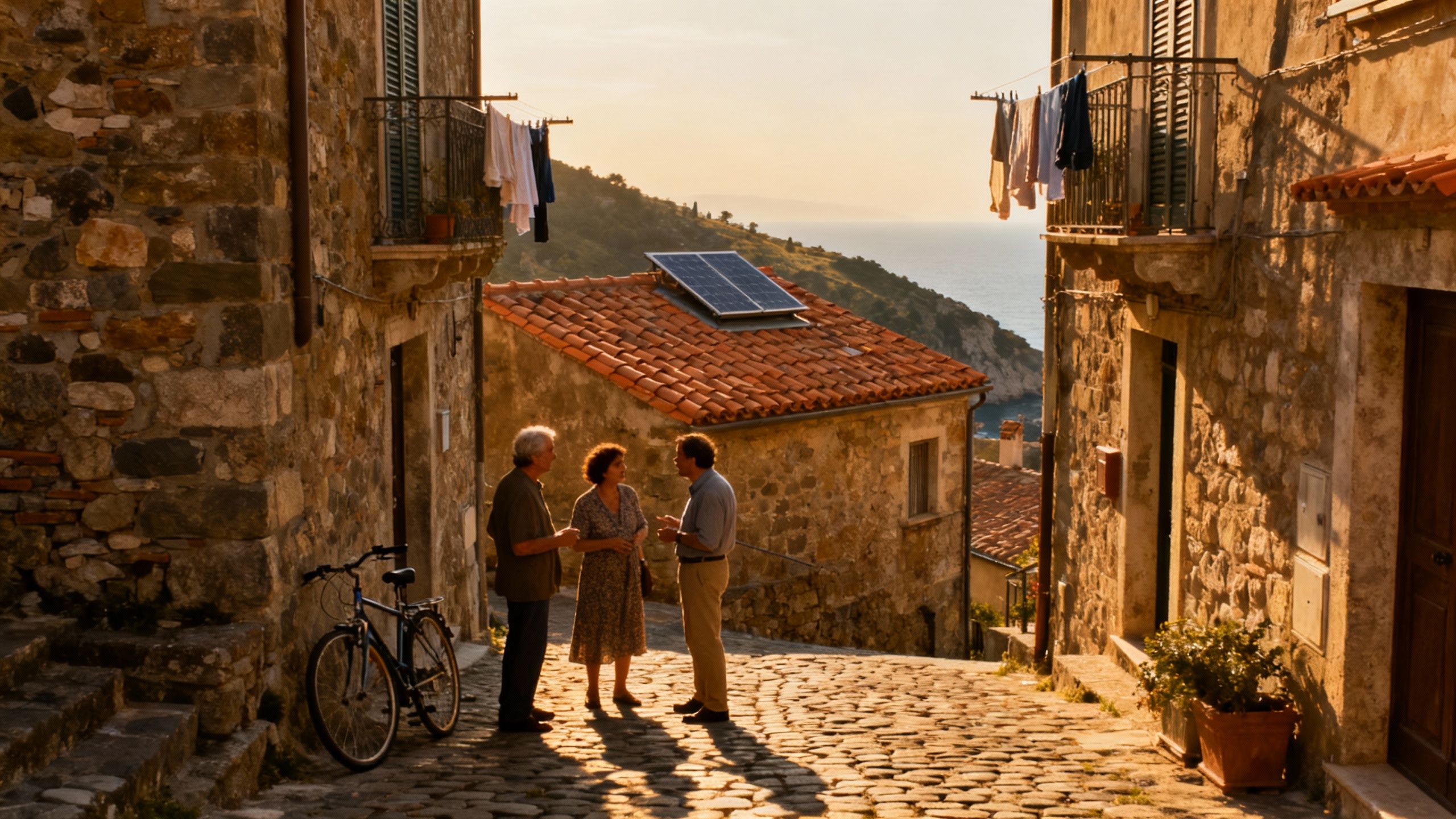Ask for Green: How to Secure Better Terms on Croatian Mortgages
Buy with seasonality and sustainability in mind: off-season viewings, green upgrades and local legal checks can secure better mortgage terms in Croatia.
Imagine the sea-salt air of Split at dawn, the thrum of a market in Varazdin, and a terrace in Istria where olive trees cast slow shadows over your morning coffee. Croatia is a place that asks you to slow down — to notice saffron light on stone roofs, the hush after the summer crowds leave, the way small towns stitch hospitality into everyday life. For international buyers who care about sustainable living, that rhythm is gold: seasonality shapes demand, local craft shapes homes, and a well-timed purchase can unlock greener financing and kinder terms.
Living the Croatia life — senses first, spreadsheet second

Start with mornings: in Zagreb you’ll find thick espresso and bookshops; on the Adriatic coast mornings mean fishermen sorting catches, cafés opening on cobbled promenades, and locals moving at what feels like the correct speed. The coastal towns—Dubrovnik, Split, Rovinj—live between intense summer tourism and quiet, luminous off-seasons when streets are for residents again. That contrast is important: it’s where lifestyle meets negotiation power, and where green upgrades suddenly become negotiable.
Neighborhoods that breathe: from Diocletian’s shadow to Istrian lanes
Walk the stairways off Stradun in Dubrovnik and the city’s living history will tell you why people renovate slowly and with reverence. In Split, stone houses on streets like Radićeva are practical for courtyard gardens; in Pula and Rovinj, Venetian-era facades invite sensitive retrofits. Inland towns—Osijek, Zadar, Šibenik—offer lower prices and stronger community ties for long-term stewards. Each place suggests different sustainable choices: solar-ready roofs on the coast, rain-harvest systems inland, and passive-shade designs for hot summers.
Food, market life and tiny rituals that anchor place
Imagine buying figs in a morning market in Hvar, joining neighbors for a late lunch of grilled fish and blitva, then wandering a lane to find a mason repairing a stone wall with care. That tactile culture matters when you buy: local craftsmen preserve value and make green renovations feel integral rather than add-on. If you want a home that breathes with the landscape, these everyday rituals are the blueprint.
Lifestyle highlights to scout on visits: • Morning espresso on Radićeva (Split) and an early stroll through Pazar market. • Sunset aperitivo along Rovinj’s waterfront and local olive oil tastings. • Weekday life in Zagreb’s Maksimir neighbourhood—parks, cafés and cultural calm. • Coastal paths near Omiš for active outdoor days. • Small-town festivals (grape harvests, feast days) that reveal local community life.
Making the move: practical considerations that preserve lifestyle and planet

Croatia’s market is brisk: national statistics show dwelling prices rose strongly through 2024–2025, with coastal areas and Zagreb leading the charge. Simultaneously, policy conversations about property taxation and long-term rentals are changing incentives for buyers and owners. These two forces mean your timing and financing choices directly affect both the lifestyle you’ll enjoy and the sustainability of your ownership.
Property styles and how they shape daily life (and green costs)
Stone Adriatic houses offer thermal mass that reduces cooling needs but often require insulation upgrades; newer apartments in Zagreb are more energy-efficient out of the box but may lack outdoor planting space. Choose based on how you want to live: courtyard gardening and rainwater capture need space and planning; an apartment may be ideal for low-maintenance living with easy grid connections and shared renewable installations.
Working with local experts who value place and planet
A Croatian lawyer and a locally rooted agent will be your best advocates. They arrange the OIB, check land registry entries, and—crucially for non-EU buyers—help with Ministry of Justice approvals where reciprocity rules apply. Choose partners who understand both sustainable retrofits (permits for solar, greywater systems) and local market rhythm; that’s how you translate lifestyle dreams into compliant, resilient ownership.
Steps to blend lifestyle goals with financing and compliance: 1. Identify the life you want (e.g., coastal terrace, orchard, low-energy apartment). 2. Ask local agents about seasonal price patterns and off-season negotiating windows. 3. Get a pre-check from a Croatian lawyer on title, encumbrances and required permits. 4. Explore green loan options and ask banks if energy upgrades lower your rate. 5. Factor in new tax/regulation signals when planning long-term rental or stewardship.
Insider knowledge: counterintuitive moves that save money and carbon
Contrary to the postcard fantasy, buying in high-season is rarely smart. Visit in autumn or early spring: sellers are calmer, craftsmen are available, and you’ll see how a place lives beyond tourism. Banks and developers are increasingly offering sustainability-linked financing—large Croatian players have secured blue/green loans—so positioning your purchase around demonstrated green upgrades (insulation, certified EPC A ratings, solar) can unlock better terms.
Cultural real-talk: what expats wish they’d known
Many expats underestimate how long administrative steps and local relationships take. Getting an OIB, securing Ministry consent if required, or lining up craftsmen for eco-retrofits takes patience. The reward is a home that fits the landscape and local life, not a checklist of features. Practically: build a buffer into your timeline and budget for thoughtful, sustainable work rather than rushed cosmetic fixes.
Long-term lifestyle + compliance: how to keep the home green and legal
Watch policy shifts: Croatia’s recent discussions about property taxation and incentives for long-term rentals change the math for owners. Choosing to rent responsibly or to retrofit for energy efficiency can reduce tax exposure and improve net returns. Keep documentation for green upgrades—many lenders ask for certificates or invoices when offering preferential green rates.
Red flags and quick wins for green-minded buyers: • Red flag: properties with informal additions or missing permits — insist on land registry clarity. • Quick win: ask sellers for recent energy bills to estimate upgrade needs. • Red flag: reliance on short-term rental revenue in hyper-tourist pockets — policy may change. • Quick win: secure an energy audit before bidding; a small investment can lower mortgage costs.
Conclusion — A life anchored in place, financed with purpose: Croatia rewards slow, thoughtful buying. Treat the market like the seasons: visit off-peak, align with local rhythms, and make green choices visible to lenders. Work with lawyers and agents who value stewardship, collect permits and energy data up front, and you’ll not only find a home — you’ll inherit a way of life that’s quieter, richer, and better for the land.
British expat who traded Manchester for Mallorca in 2017. Specializes in guiding UK buyers to luxury Spanish estates with clear navigation of visas and tax.


